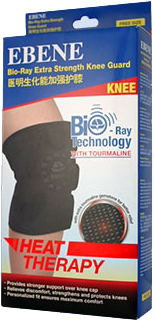How to Pain-Proof Your Knees: Physiotherapy & Wellness Pointers
We’re here to ensure your knees are at their best. With 70% of your body weight always resting on the strength of your knees, it is no surprise that the knee is one of the body’s biggest and most common injury to active sports people and the elderly.
You only notice the necessity of protecting your knee when it becomes difficult to complete the simplest of tasks. Suddenly, it takes longer for you to walk from your bedroom to the front door.
Stationary cycling, walking or water exercises are great ways of building knee strength. Knee-bending activities, such as hill-walking and high-impact exercises, such as running and ball games should be avoided as they can cause further strain. To be on the safe side, wear a protective knee guard before you begin your warm-up.
The next time you feel weak at the knees, know that there are many ways out of this discomfort. With these physiotherapy and wellness tips you can try at home, your knees will be kept healthy and happy.

1. Build strength and flexibility
It is always better to prevent the likelihood of a serious knee injury occurring than to fix an injured knee. When your knees are healthy, the muscles will act as natural knee support. To maintain the strength and durability of your knees, it is wise to start building the strength of the supporting muscles around the knees regularly.
To achieve that, do exercises that target your quadriceps and hamstrings. Try these three at home – short arc quads, wall slides and bridges. For more challenging exercises to advance your strength program, try out seated knee extensions and hamstring curls at the gym with resistance heavy enough to struggle with 3 sets of 10 reps. All of these exercises help build strength in the front and back of your thigh.
Improve your flexibility by stretching regularly. Gentle progressive stretching improves blood flow to stiff joints and aids range-of-motion. Extremely helpful for preventing injury where instances of joint hyperextension may occur within sports participation.
2. Practice the RICE technique
RICE stands for Rest, Ice, Compression and Elevation and helps to promote healing. One of the most common and effective resolutions to managing knee injuries. It is renowned as one of the most common and effective resolutions to managing knee injuries in the early stages.
- The problem with arthritis is that too much rest causes stiffness and too little causes irritation. Resting for more than 20 minutes tends to lead to stiffening of the knee in most people. In cases of immediate injury to the knee, immobilization helps to aid the healing process with the connecting of scar tissue to the injured muscle stump, but should be limited to the first few days of injury only.
- Ice packs are useful as treatment. Whether you’ve injured your knee or suffered an arthritis flare-up, ice around the joint for 20 minutes each hour lowers inflammation.
- Wearing a knee compression sleeve is necessary for pain relief. Formed by minerals, Bio-Ray is a far infrared ray capable of stimulating blood and oxygen circulation to produce this effect. The use of compression, allows sturdy alignment and stabilisation of the muscles and tendons to successfully support the knee joint for maintaining normal joint movement.
- It is recommended to elevate the sore body part above the level of your heart. This will bring down any pain, throbbing or internal bleeding. If your knee is hurting, you can prop your leg up on pillows while sitting or lying on the sofa.
3. Invest in low-impact exercise
Don’t let the pain stop you from staying active.
Stationary cycling, walking or water exercises are great ways of building knee strength. Knee-bending activities, such as hill-walking and high-impact exercises, such as running and ball games should be avoided as they can cause further strain. To be on the safe side, wear a protective knee guard before you begin your warm-up.
4. Wear supportive shoes to reduce knee pain
Choose the right shoe before you get back on your feet.
Properly fitting shoes are necessary for exercise. Cushioned insoles reduce stress on your knees (and they feel much more comfortable). The more comfortable the shoe, the less force is placed upon the knee during activity. Soft, flexible sneakers or ballet flats are a great choice.

5. Eat anti-inflammatory foods
Inflammation exacerbates knee pain.
Certain foods are known to inhibit a key enzyme in inflammation. Apples, onions and green tea are the most common sources next to spices such as turmeric, ginger and red pepper. Cold water fish such as salmon, mackerel and tuna can also help, due to their omega-3 levels.
6. Don’t overlook your emotional state
Your mental wellbeing is just as important as your physical health.
It is far from surprising that arthritis pain has a negative impact on how we feel. Pain that consistently disrupts your abilities can escalate to a cycle of hopeless thinking, making your pain harder to manage. A form of therapy often sought to foster positive mind-body interaction is relaxation therapy. Relaxation can be achieved through mindfulness meditation, yoga and deep breathing.
Many of these steps offer the bonus of helping you avoid other diseases in addition to our physiotherapy and wellness tips aforementioned. Lastly, it is recommended to strap on a knee guard so you can continue living life on your own terms. Bio-Ray is our healing technology that will help you do that. This man-made far infrared emits an energy ray that penetrates deep into the human body, to stimulate blood and oxygen circulation and provide relief.
Put an End to Pain & Inflammation with our Bio-Ray Extra Strength Knee Guard
Reduce inflammation and swelling effectively with our unique heat therapy treatment. Find out more about its special features and benefits below.




